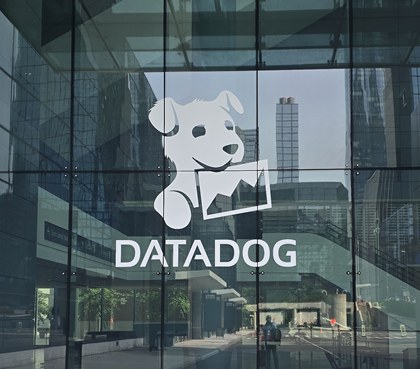Datadog DASH: A Revolving Door Of Operations And Security Announcements
 In the ever-evolving circus of enterprise tech and AI advancements, Datadog’s 2025 keynote was clearly fueled by the AI arms race. CEO Olivier Pomel and his team unveiled a dizzying array of AI-powered tools and capabilities promising to transform the mundane world of IT operations from a reactive firefighting exercise into a proactive, almost magical realm of autonomous problem prevention and remediation. From AI security analysts that triage threats in seconds to dev agents that generate pull requests while engineers sleep, Datadog is betting big on the promise that AI will rescue us from the soul-crushing minutiae of modern software development. The overwhelming list of announcements that lasted for nearly 2 hours ended with a screen filled with nearly 100 items that were spoken to during the keynote. Whether these collectively materialize into a revolutionary leap forward or not remains to be seen, but one thing is certain: The future of tech looks increasingly algorithmic.
In the ever-evolving circus of enterprise tech and AI advancements, Datadog’s 2025 keynote was clearly fueled by the AI arms race. CEO Olivier Pomel and his team unveiled a dizzying array of AI-powered tools and capabilities promising to transform the mundane world of IT operations from a reactive firefighting exercise into a proactive, almost magical realm of autonomous problem prevention and remediation. From AI security analysts that triage threats in seconds to dev agents that generate pull requests while engineers sleep, Datadog is betting big on the promise that AI will rescue us from the soul-crushing minutiae of modern software development. The overwhelming list of announcements that lasted for nearly 2 hours ended with a screen filled with nearly 100 items that were spoken to during the keynote. Whether these collectively materialize into a revolutionary leap forward or not remains to be seen, but one thing is certain: The future of tech looks increasingly algorithmic.
The Promise And Peril Of AI-Driven Observability
Datadog’s DASH 2025 keynote was a masterclass in AI optimism — equal parts compelling and questionable, some elements now generally available but many still at “preview” or “coming soon” status. Bits, Datadog’s AI, featured prominently in a multitude of product announcements and enhancements. Bits gains an AI voice interface and will have broader data access and exploration capabilities to improve root-cause analysis. As an example, Bits AI SRE was positioned as an autonomous incident resolution AI agent that can simultaneously investigate multiple root causes in minutes. The APM Investigator promised to deliver intelligent pattern recognition based on memories and learning. The Dev Agent will work with error tracking, Real User Monitoring, traces, databases, test optimization, and more.
Datadog’s AIOps and observability platform gets enhancements grounded in the expansion of capabilities to extend its reach both deeper into technologies and broader into the organization for contextual awareness. While all these announced capabilities are intriguing, there will be many cultural, in addition to technological, challenges to overcome in the real-world complexity of IT and technology platforms before becoming mainstream.
The narrative conveyed was that of the Datadog platform being the central hub for operational intelligence, a notion promoted by more and more vendors in this market space in 2025. Missing from DASH, as if nonexistent, was any conversation about AI hallucinations, the computational cost of these “intelligent” systems, and the human expertise that these tools might inadvertently deprecate.
Datadog Continues Its Push Into Security Operations
Datadog announced security monitoring capabilities in 2019, marking its first entry into the security information and event management (SIEM) market. Since then, it has grown its capabilities and team significantly — one of its more recent announcements in December 2024 highlighted its approach to risk-based insights and its threat detection and engineering team. This year at DASH, it unveiled its Bits AI Security Analyst, a parallel agent to the Bits AI SRE and dev agents it also released. Much like other recent AI agent announcements from competitors such as Microsoft, CrowdStrike, Google Cloud, and others, the AI Security Analyst automatically investigates SIEM alerts within its domain expertise. For Bits AI Security Analyst, that currently includes AWS CloudTrail, with expansion into other domains coming soon.
Datadog also announced enhancements to log management that affect its SIEM and observability offerings. It introduced a Flex Frozen storage tier to retain logs up to seven years, and, importantly, the ability to archive search without re-indexing, which is helpful for compliance use cases. Other vendors like Elastic have similar features, such as searchable snapshots to be able to access archived data quickly.
Datadog also announced a CloudPrem capability to deploy Datadog index and search on-premises to meet data residency and compliance mandates. Forrester continues to see a push and pull from clients that want the freedom of a cloud deployment versus the potential regulatory requirements that necessitate an on-premises deployment, and this feature will hopefully help strike the balance between the two with what was previously a capability solely available in the cloud.
Datadog Releases Features To Help Teams Secure AI
Datadog also made a plethora of announcements on securing AI deployments, especially with regards to securing the models themselves. It announced Datadog LLM Observability, which is generally available and allows users to trace large language model (LLM) chains and troubleshoot outputs, among other features such as performance monitoring and metrics measurement. It also announced Datadog Workload Protection, which received an upgrade that’s currently in preview, that handles LLM Isolation, enforcing guardrails on deployed LLMs and identifying vulnerabilities. And lastly, Datadog Code Security is now generally available for the identification and prioritization of vulnerabilities in custom and open-source code, integrated into the developer’s integrated development environment. When it comes to artificial intelligence security, Forrester recommends focusing first on the users and prompts before moving into model security itself — many of the attacks on models are, at this point, academic, but there are many vendors exploring LLM security at this point. SIEM vendors are in some ways uniquely positioned to support emerging use cases such as LLM security, as data can be ingested from these tools quickly and users can build specific analytics to meet their use case. We recommend scheduling a guidance session with Jeff Pollard for more in-depth conversations on which vendors may be the best fit.
Data Intelligence Underpins Operational Insights
Datadog’s data intelligence approach is its response to the growing complexity of enterprise data ecosystems, seeking to address this challenge through data observability. Clients should watch this area closely for end-to-end data lineage tracking as the capability matures over time. You will want to see how these solutions provide visibility across the entire data lifecycle — from source systems through transformation to consumption — a critical pain point for data engineers and analysts. The ability to trace data issues upstream and understand their broader impact is a desired capability by enterprises, but it is a challenging one fraught with obstacles for vendors.
AI agent interaction monitoring represents an emerging need for organizations that are increasingly deploying complex, interconnected AI systems. A unified view of agent performance, cost, and potential issues across custom and third-party agents is the vision that Datadog presented. ServiceNow’s AI Control Tower, which was announced earlier this year, has a similar objective; the company describes it as a central intelligence hub. Datadog’s AI Agents Console’s ability to track third-party agent performance and security is a fast-growing need in an increasingly fragmented tech ecosystem. Vendors are still in the early stages of developing and bringing these capabilities to market, capabilities that will change as Model Context Protocol, the connective tissue to make this a scalable reality, matures.
Forrester clients, if you have additional questions or want to dive further, submit a request for an inquiry or guidance session here. Follow our research at the Forrester website by clicking Carlos Casanova or Allie Mellen.
